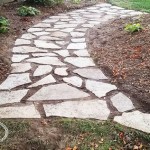How to DIY a Concrete Patio
A concrete patio is a versatile addition to any backyard, providing a durable and long-lasting surface for entertaining, dining, or simply relaxing. While it may seem like a daunting task, building a concrete patio is a project that many homeowners can tackle with the right tools, planning, and some elbow grease. This article will guide you through the steps of constructing a DIY concrete patio, from planning and preparation to pouring and finishing the concrete.
Planning and Preparation
Before breaking out the tools, careful planning is essential for a successful concrete patio project. This involves determining the size, shape, and location of the patio, obtaining necessary permits, and taking into account factors like drainage and accessibility.
1.
Determine the Size and Shape:
The ideal size and shape of your patio will depend on your intended use and available space. Consider how many people you want to accommodate, the furniture you plan to use, and the overall flow of your backyard. A simple rectangular shape is often the easiest to construct, but you can also choose a curved or more complex design.2.
Choose a Location:
The location of your patio should be easily accessible from your home and provide a pleasant view. Consider factors like sunlight exposure, proximity to trees or utility lines, and potential drainage issues.3.
Check Local Building Codes:
Contact your local building department to inquire about any permits required for a concrete patio. They may also provide guidelines regarding setbacks from property lines and other regulations.4.
Prepare the Area:
Once the location is determined, clear the area of any vegetation, debris, and existing ground cover. Level the ground using a rake or shovel to ensure a flat surface for the concrete. If the ground is uneven or slopes, you may need to adjust the area with fill dirt or create a slight slope for drainage.5.
Create a Base:
A strong base is crucial for preventing cracks and settling. Dig a 4-6 inch deep trench for the base, depending on local regulations. Ensure the bottom of the trench is level and compact the soil. Consider using gravel or a layer of crushed stone for drainage.6.
Install a Formwork:
The formwork acts as a mold for the concrete patio and will determine its final shape and dimensions. Use wood planks or pressure-treated lumber to construct the frame. Secure the forms using stakes and bracing to ensure stability and prevent them from shifting during the pouring process.Pouring the Concrete
The next step is pouring the concrete and allowing it to cure. This requires careful mixing, placing, and leveling to ensure a smooth and durable surface.
1.
Order Concrete:
Based on the size and thickness of your patio, calculate the volume of concrete needed. Order concrete from a local supplier and schedule delivery to coincide with the pouring process.2.
Mix the Concrete:
Ensure the concrete mix is consistent and meets the required strength. If you are using ready-mixed concrete, follow the instructions from the supplier. If mixing your own concrete, use a wheelbarrow or concrete mixer to combine the ingredients - cement, sand, aggregates, and water.3.
Pour the Concrete:
Gradually pour the concrete into the formwork using a shovel or concrete bucket. Start at one end and work your way across. Make sure the concrete fills the formwork evenly and to the desired depth.4.
Level the Concrete:
Use a screed board or trowel to level the concrete, ensuring it is flush with the top of the formwork and free of any air pockets.5.
Finish the Concrete:
After the initial leveling, use a trowel or float to smooth the surface. For a smoother finish, use a broom or a textured roller to create a nonslip pattern.Curing the Concrete
Once the concrete has been poured and finished, it needs time to cure and harden. This process involves protecting the concrete from extreme temperature fluctuations and excessive drying, ensuring proper bonding and strength.
1.
Protect the Concrete:
Cover the concrete with plastic sheeting or a damp burlap sack to prevent it from drying out too quickly. Water the concrete regularly, especially during hot or windy weather, to maintain moisture.2.
Allow Sufficient Time:
The curing process takes several days to a week depending on the weather conditions. Avoid walking on or applying any load to the concrete during this time.3.
Remove the Forms:
Once the concrete has reached the desired strength, usually after a few days, remove the formwork. You may need to gently tap the formwork to release it from the concrete.4.
Seal the Concrete:
Once the concrete has fully cured, consider applying a sealant to protect it from stains, weathering, and erosion. This will also make cleaning and maintenance easier.Building a concrete patio is a rewarding project that can dramatically enhance the beauty and functionality of your outdoor space. With thorough planning, careful execution, and proper curing, you can create a durable and long-lasting patio that will be enjoyed for years to come.

Diy Concrete Patio In 8 Easy Steps How To Pour A Cement Slab

Diy Concrete Patio How To Pour A Slab Bob Vila

Diy Concrete Patio How To Pour A Slab Bob Vila

How To Make A Nice Cement Patio Diy Concrete

Diy Concrete Patio How To Pour Your Own Slab Bn S

How To Plan Pour Your Diy Concrete Patio Liberty Ready Mix

Resurfacing A Concrete Patio For Budget Diy Makeover Fab Everyday

Diy Stamped Concrete Patio How To Stamp By Budget101 Com

Diy Concrete Patio Makeover The Frugal South

Quikrete Building A Concrete Patio








